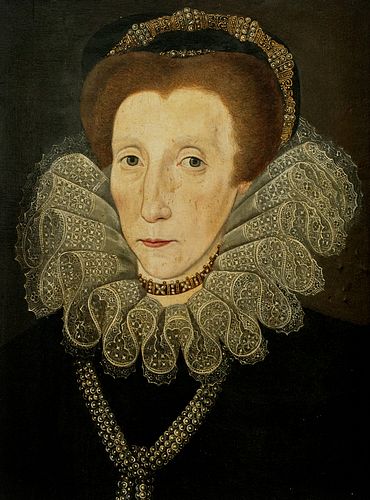English school of the XVI century. Circle of ROBERT PEAKE (1551-1619). Portrait of a lady. Oil on panel.
Lot 51
About Seller
Setdart Auction House
Carrer Aragó 346
Barcelona
Spain
Setdart Subastas was born in 2004 and is currently the first online art auction in Spain with solidity, prestige and reliability guaranteed by our more than 60,000 users. Setdart has a young, dynamic and enterprising team ready to successfully manage the purchase and sale of art works through custom...Read more
Estimate:
EUR€5,500 - EUR€6,000
$5,913.98 - $6,451.61
Absentee vs Live bid
Two ways to bid:
- Leave a max absentee bid and the platform will bid on your behalf up to your maximum bid during the live auction.
- Bid live during the auction and your bids will be submitted real-time to the auctioneer.
Bid Increments
| Price | Bid Increment |
|---|---|
| EUR€0 | EUR€10 |
| EUR€200 | EUR€25 |
| EUR€500 | EUR€50 |
| EUR€1,000 | EUR€100 |
| EUR€3,000 | EUR€200 |
| EUR€5,000 | EUR€500 |
| EUR€10,000 | EUR€1,000 |
| EUR€20,000 | EUR€2,000 |
| EUR€50,000 | EUR€5,000 |
About Auction
By Setdart Auction House
Nov 3, 2021
Set Reminder
2021-11-03 08:00:00
2021-11-03 08:00:00
America/New_York
Bidsquare
Bidsquare : OLD MASTERS
https://www.bidsquare.com/auctions/setdart-auction-house/old-masters-7786
Setdart Auction House sofia@setdart.com
Setdart Auction House sofia@setdart.com
- Lot Description
English school of the XVI century. Circle of ROBERT PEAKE (1551-1619). Portrait of a lady. Oil on panel. Measurements: 39 x 29 cm; 65 x 55 cm (frame). Robert Peake, called "the old man" was an important English painter active throughout the end of the reign of Elizabeth I and the first years of the reign of his successor, James I. He trained with the painter Laurence Woodham, beginning in 1565, and with the miniaturist Nicholas Hilliard a few years later. It seems that by the late 1580s he was well established in London, and had a large clientele composed of the upper class and the court. He enjoyed royal favor and devoted himself to the creation of works for Prince Henry Stuart and for King James I, eventually obtaining the position of royal painter, which he shared with John De Critz. In fact, Peake worked in collaboration with De Critz and with another painter, Marcus Gheeraerts the Younger, and with the miniaturist Isaac Oliver, so that sometimes the final authorship of the works attributed to this circle is controversial. The portrait of shows a style, both in terms of composition and pictorial workmanship, closely linked to that of Robert Peake. The woman is depicted bust-length, looking directly at the viewer but with her face slightly tilted. She is dressed in black, although her face is haloed by a splendid white lace ruff characteristic of the Elizabethan period. The red-haired hair, pulled back and covered by a hood richly adorned with pearls, underlines the oval of a heart-shaped face. The attitude is serene, somewhat blasé, as befits. The Virgin Queen, Gloriana or Good Queen Bess (Greenwich, 1533 - Richmond, 1603) was queen of England and Ireland from 1558 until her death. Elizabeth was the fifth and last monarch of the Tudor Dynasty. Daughter of Henry VIII, she was born a princess, but her mother, Anne Boleyn, was executed when she was three years old, so Elizabeth was declared an illegitimate child. However, after the death of her siblings Edward VI and Mary I, Elizabeth assumed the throne. One of the first measurements she took was to establish a Protestant church independent of Rome, which would later evolve into the present Church of England, of which she became the highest authority. Elizabeth was expected to marry, but despite several requests from Parliament, she never did. As Elizabeth grew older, her virginity made her famous and a cult grew up around her, celebrated in portraits, pageants and literature of the time. The queen took charge of a country divided over religious issues in the second half of the 16th century. During her reign, England enjoyed great cultural splendor, with figures such as William Shakespeare and Christopher Marlowe; also important figures such as Francis Drake and John Hawkins. He maintained frosty relations with Philip II, with whom he waged a war that ruined both countries economically. His 44-year reign was the fifth longest in English history, behind those of Elizabeth II, Victoria I, George III and Edward III.
- Shipping Info
-
In-house shipping available. Please inquire at admin@setdart.com.
-
- Buyer's Premium



 EUR
EUR CAD
CAD AUD
AUD GBP
GBP MXN
MXN HKD
HKD CNY
CNY MYR
MYR SEK
SEK SGD
SGD CHF
CHF THB
THB
















